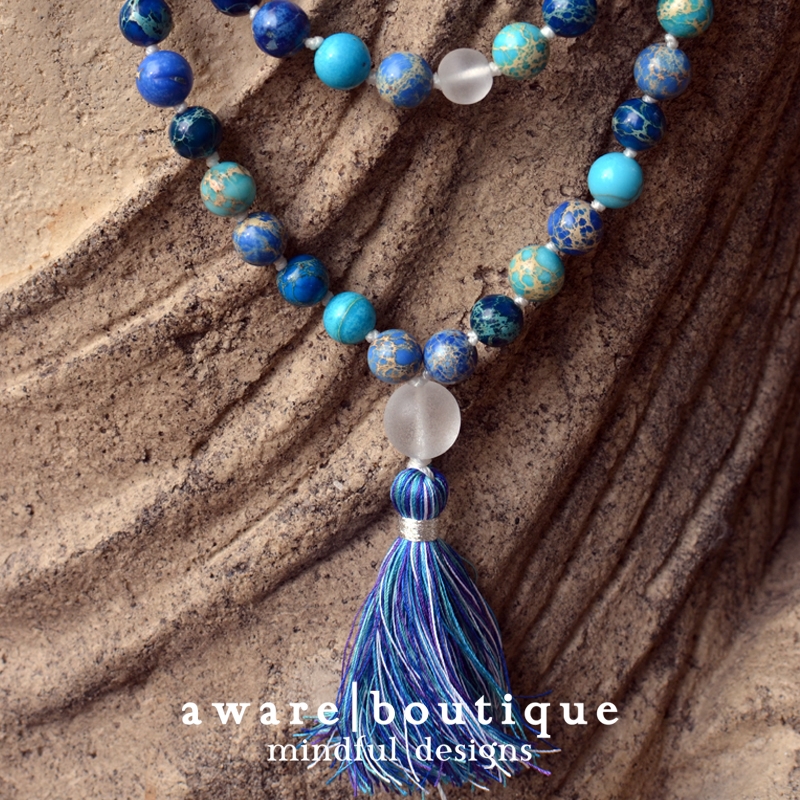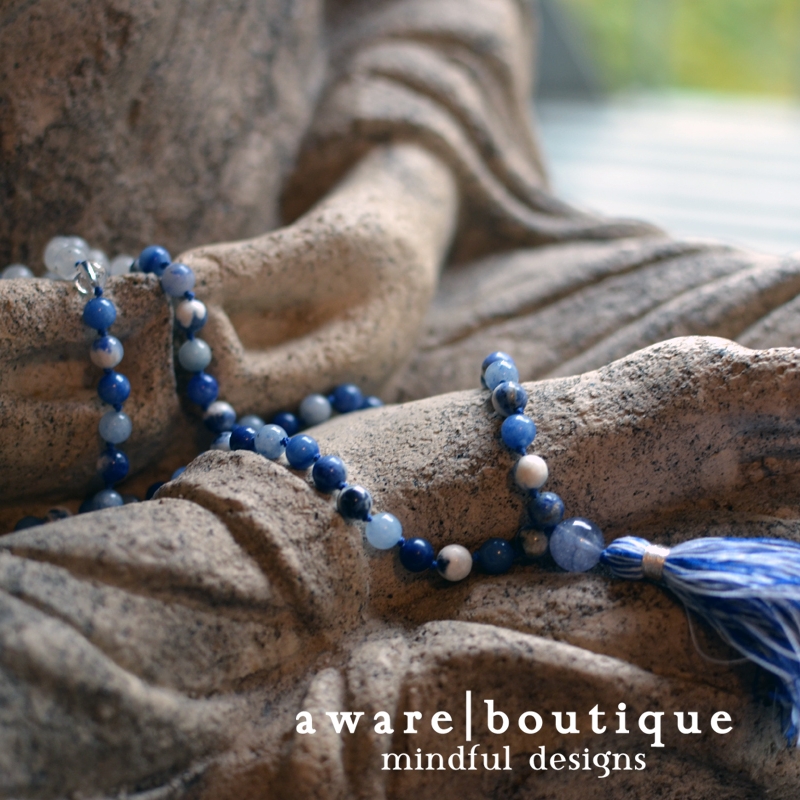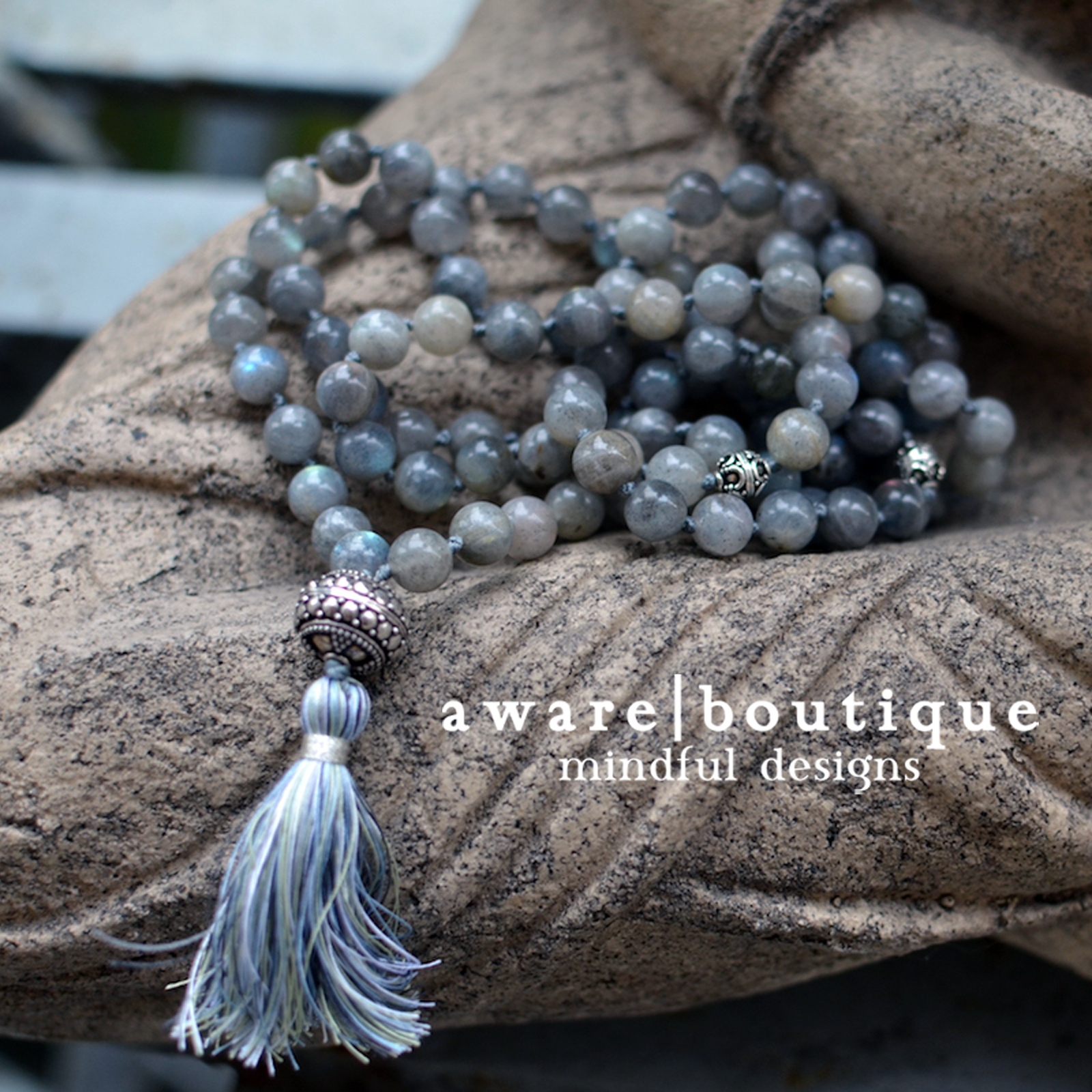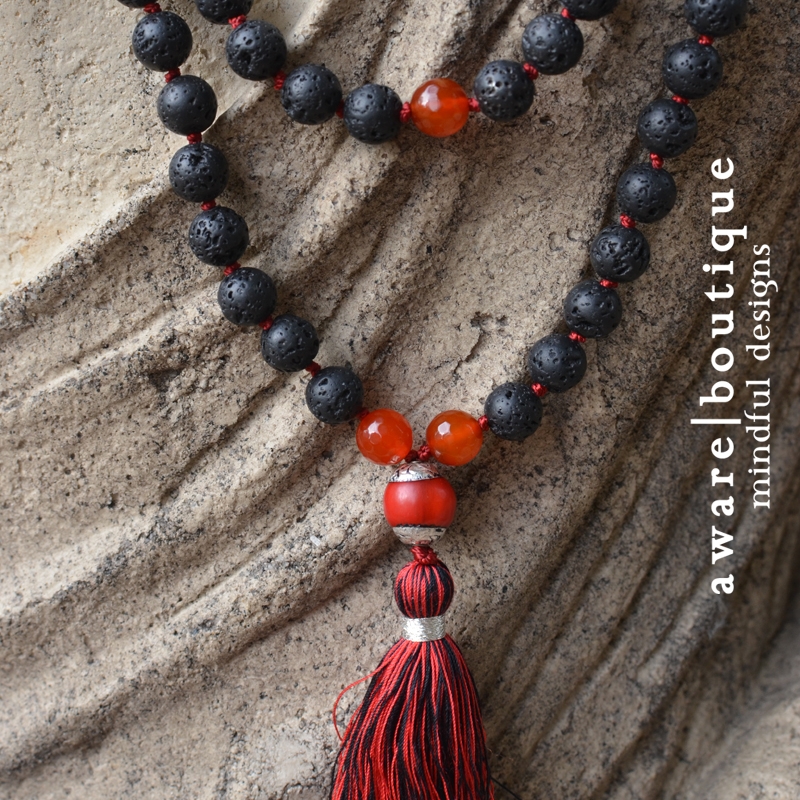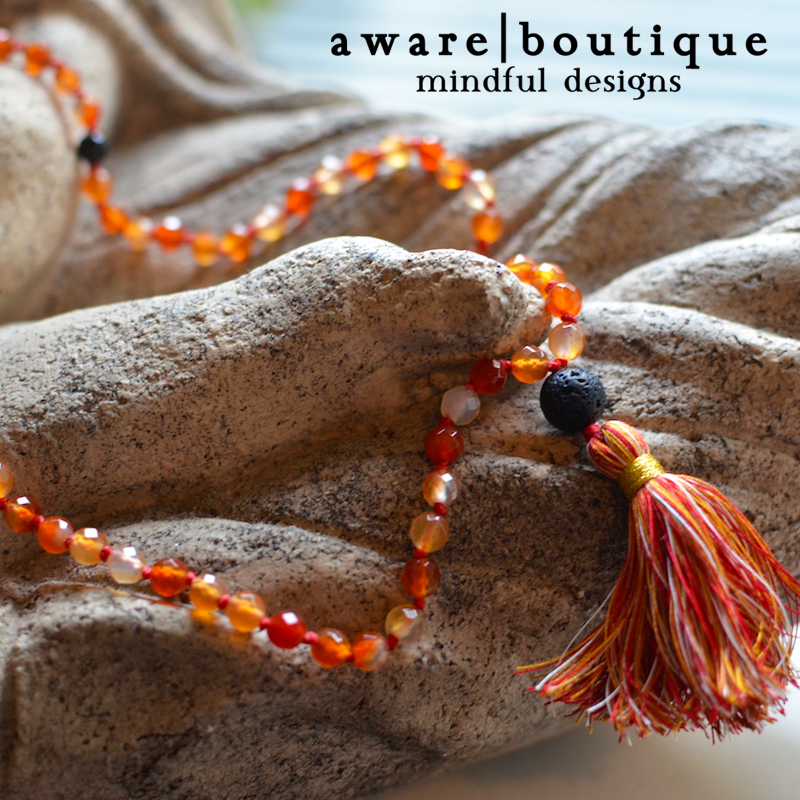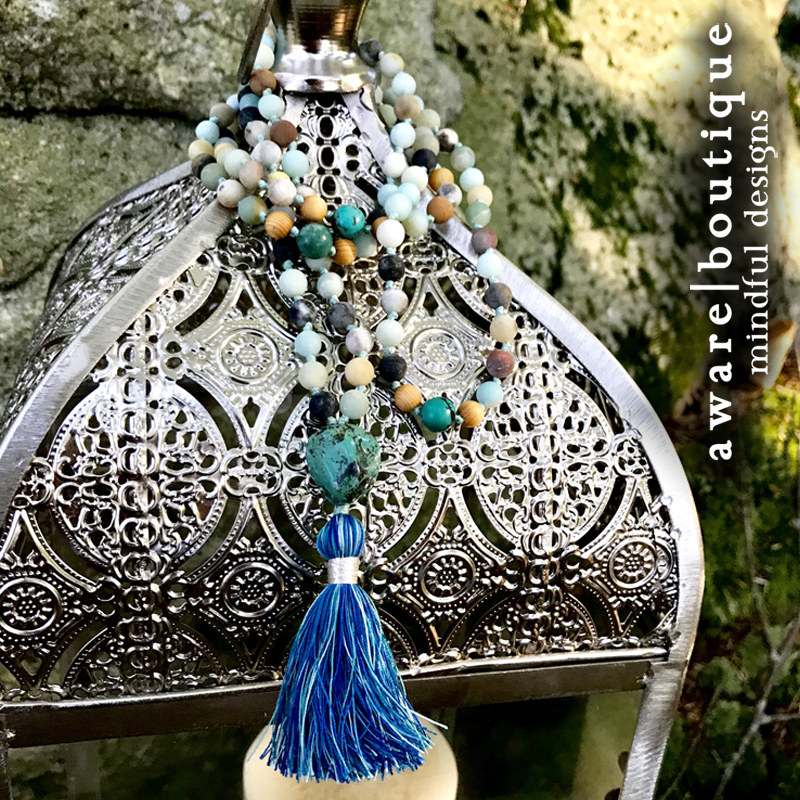Sedna: Goddess of the Sea
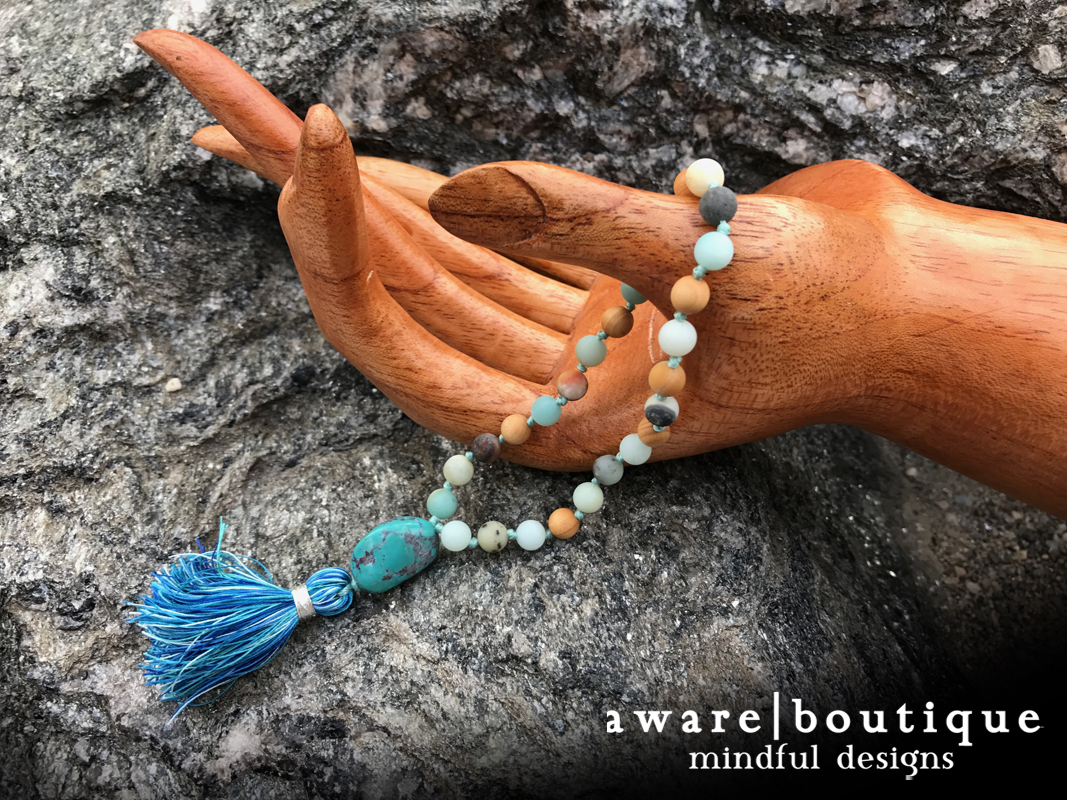
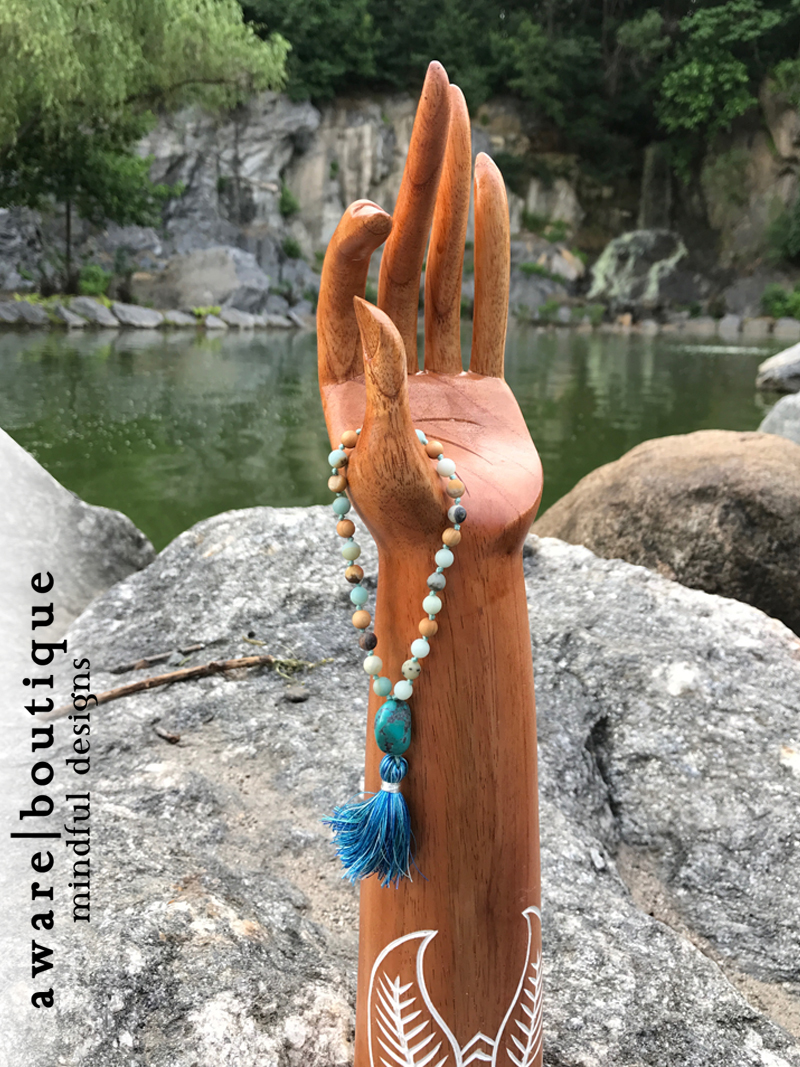


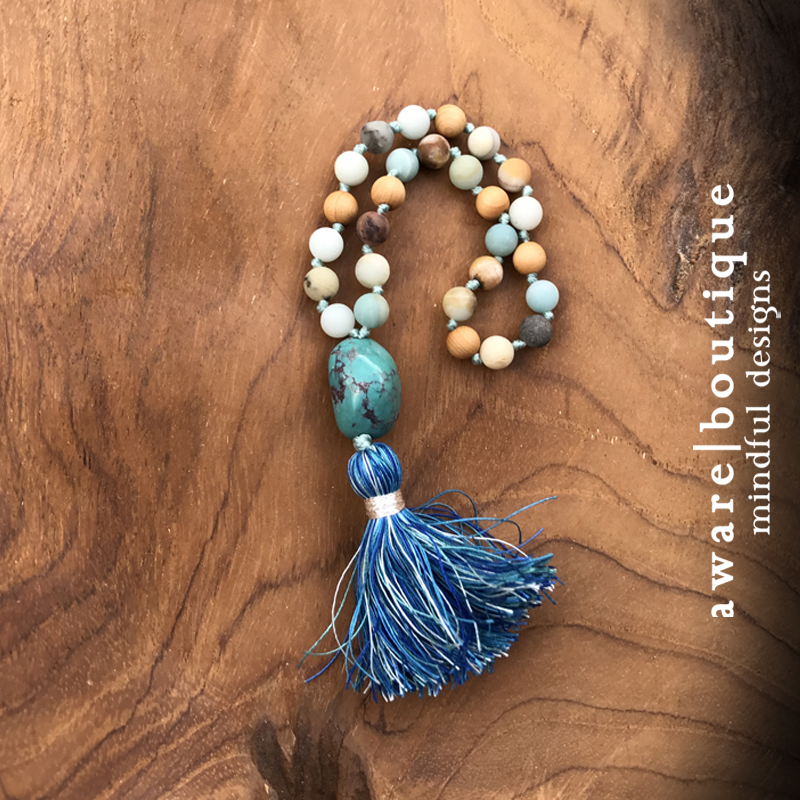
This mala's metaphysical properties include:
- Promotes serenity and peace
- Provides balance and harmony
- Promotes courage and truth
- Alleviates worry
- Promotes self-acceptance
- Provides strength
- Uplifting
- Relieves stress
- $35 6mm
- $45 8mm
Sedna is the goddess of the sea and marine animals in Inuit mythology, also known as the Mother of the Sea or Mistress of the Sea. The story of Sedna, which is a creation myth, describes how she came to rule over Adlivun, the Inuit underworld. The legend of how Sedna became a sea goddess is told throughout the Arctic. The story varies from one region to the next. However, in all versions, a young woman becomes the mother of all sea creatures. After being promised into marriage by her father, she is married to a man who turns out to be part bird. However, upon discovering how unhappy she is with her new husband, Sedna's father attempts to rescue her, but they are attacked by a flock of birds, and their kayak is capsized. Sedna sank to the bottom of the ocean and there she became a powerful spirit. Now at home on the ocean floor, she becomes a mermaid, with the head and torso of a woman and the tail of a fish.
This 27 Bead Pocket mala is part of our Water Collection. This pocket mala is a quarter the size of a traditional 108 Bead Tibetan mala, it contains 27 beads plus 2 marker beads (not to be counted in meditation), and a guru bead and silk tassel. This particular mala is comprised of Matte Amazonite, with Aromatic Sandalwood and Turquoise marker beads and Raw Turquoise guru bead. The tassel is 100% spun silk in variegated shades of blue and turquoise. This pocket mala has been hand-knotted with seafoam green color Nylon thread for its strength and durability, especially important when working with natural stones, as their hard edges can sometimes rub against and weaken other threads such as cotton or silk. All of our malas are hand-knotted between each bead, which protects your beads should the mala ever break. It also helps alleviate potential damage caused by beads rubbing against each other.
This design features a scaled version of the same pattern used in our traditional tibetan full size malas, but is broken into three sections of 9 instead of four sections of 27. It is also available in a beautiful Triratna pattern emphasizing groupings of three (Please note that the Triratna pattern has marker beads between each set of 3, to be counted in meditation, and therefore does not feature extra uncounted marker beads). In addition to the sacred symbolism of the number 108 (and therefore the number 27), the number 3 is sacred in Buddhism as well. In Buddhism, the number 3 can be seen to represent the Three Jewels (the Triratna) that make up Buddhism. These are: The Buddha, The Dharma (The body of teachings that describe Buddhist doctrine and belief), and The Sangha (The group of people who follow the Buddha and his teachings).
If you are looking for a matching bracelet to wear without a tassel, please see the link below for our Intention Bracelets!
Note: This Pocket Mala is available with either 6mm or 8mm beads. Some people choose to use them as travel size meditation malas at a compact quarter size of a full 108 beads, while other people prefer to wear them on their wrist to benefit from the metaphysical properties alone. Please keep in mind that because the thread is not elastic, this mala is not adjustable. Therefore, it may or may not fit over your fist to slide onto your wrist. Sizes are as follows:
6mm - 6.25" (inside circumference) - 7.5" (full length including tassel)
8mm - 9" (inside circumference) - 10.25" (full length including tassel)
Please note that due to the unique, hand-knotted nature of our jewelry, sizes may vary slightly from one piece to another. Please specify bead size and pattern preference (Standard or Triratna) during checkout.
Amazonite
Like the deep and ancient waters of the river for which it is named, Amazonite beckons in captivating shades of turquoise and green, promising to calm the spirit and soothe the soul. Embodying the legendary woman warriors it personifies, its powerful energy provides harmony and balance, tempering aggression and taming the irrational. Sometimes called the Stone of Courage or the Stone of Truth, Amazonite empowers one to search the self and unveil one's own integrity and truth, and move into alignment with those beliefs and values. From times of the earliest cultures in Mesopotamia, Egypt and India, Amazonite has been used as a powerful talisman of healing and prosperity. Amazonite, also called Amazon Jade, is a green to blue-green variety of Microcline, a Feldspar mineral that forms in short prismatic or tabular crystals or in masses. It ranges in hue from bright verdigris green to paler shades of turquoise, sometimes with white, yellow or grey portions, and can be translucent to opaque. Amazonite is a wonderful healer for the emotional body. It soothes trauma and calms the mind, alleviates worry and fear, and directs anger and irritability into a more positive action. It regulates aggression and urges the mind to seek emotional balance. Amazonite carries a spiritual energy of personal truth, magnifying our intentions and empowering us to manifest our dreams and desires.
Aromatic Sandalwood
Sandalwood is a sacred wood with a lovely aromatic scent. Grown in Asia and East India, Sandalwood was originally used at funeral ceremonies, its scent believed to the soul into the next life. The aroma — which retains its fragrance for decades — comes from the wood itself rather than the leaves or flowers. The warm soothing scent of sandalwood helps the mind to unwind and helps open the heart to love. In ancient Buddhist tradition, Sandalwood has been celebrated as the perfect meditation tool for thousands of years. It is widely believed that the sandalwood scent can stimulate sensuality, grant a sense of awareness, invoke tranquility, awaken the divine thoughts within and promote profound relaxation. Sandalwood is believed to enhance trust and self-identity. In the Ayurvedic healing tradition, it promotes energy and enthusiasm; increasing a person's self-esteem and zest for life. You can use the healing aroma of sandalwood to promote feelings of peace and serenity and also to ease various ailments of the digestive system. It subdues aggression and irritability, promotes compassion and openness and enhances meditation.
Turquoise
Turquoise is perhaps the oldest stone in man’s history, a talisman of kings, shamans, and warriors alike. It is a strong and opaque stone of protection, prized across all cultures for thousands of years as a symbol of wisdom, nobility and the power of immortality. Turquoise was considered sacred in its adornment and was used to bring power, luck, and protection, and to encourage us to honor ourselves as a creation and a tool of the Divine. A strengthening stone, it is good for overcoming exhaustion, depression, or panic attacks, providing solace for the spirit and well-being for the body. Turquoise benefits one's overall mood and emotion by balancing and inducing a sense of serenity and peace, while purifying and dispelling negative energy. It promotes self-realization, aids in creative problem-solving, helps stabilize mood swings, and dissolves a martyred attitude of self-sabotage. Spiritually, Turquoise heals and cleanses both the spiritual energy centers and the physical body. It acts to induce wisdom and understanding, and to enhance trust, kindness, and the recognition of beauty. Turquoise helps us moderate aggressiveness and deal with rage, bringing us back to our center, tempering excesses, neutralizing extremes, and relieving stress. Turquoise is a fresh, welcome energy that moves us to serenity as new growth and life emerges, bringing hope, discovery and balance.
